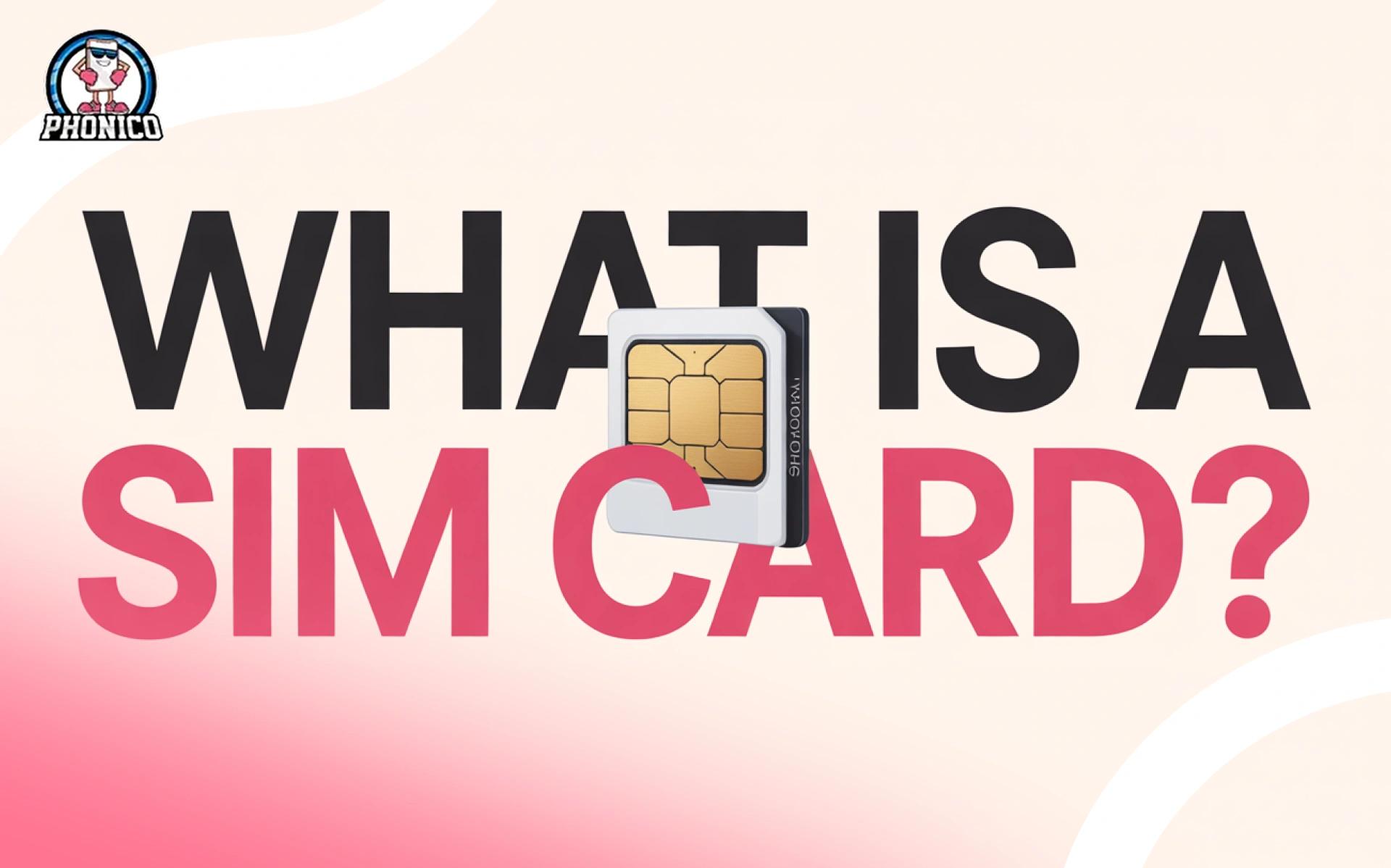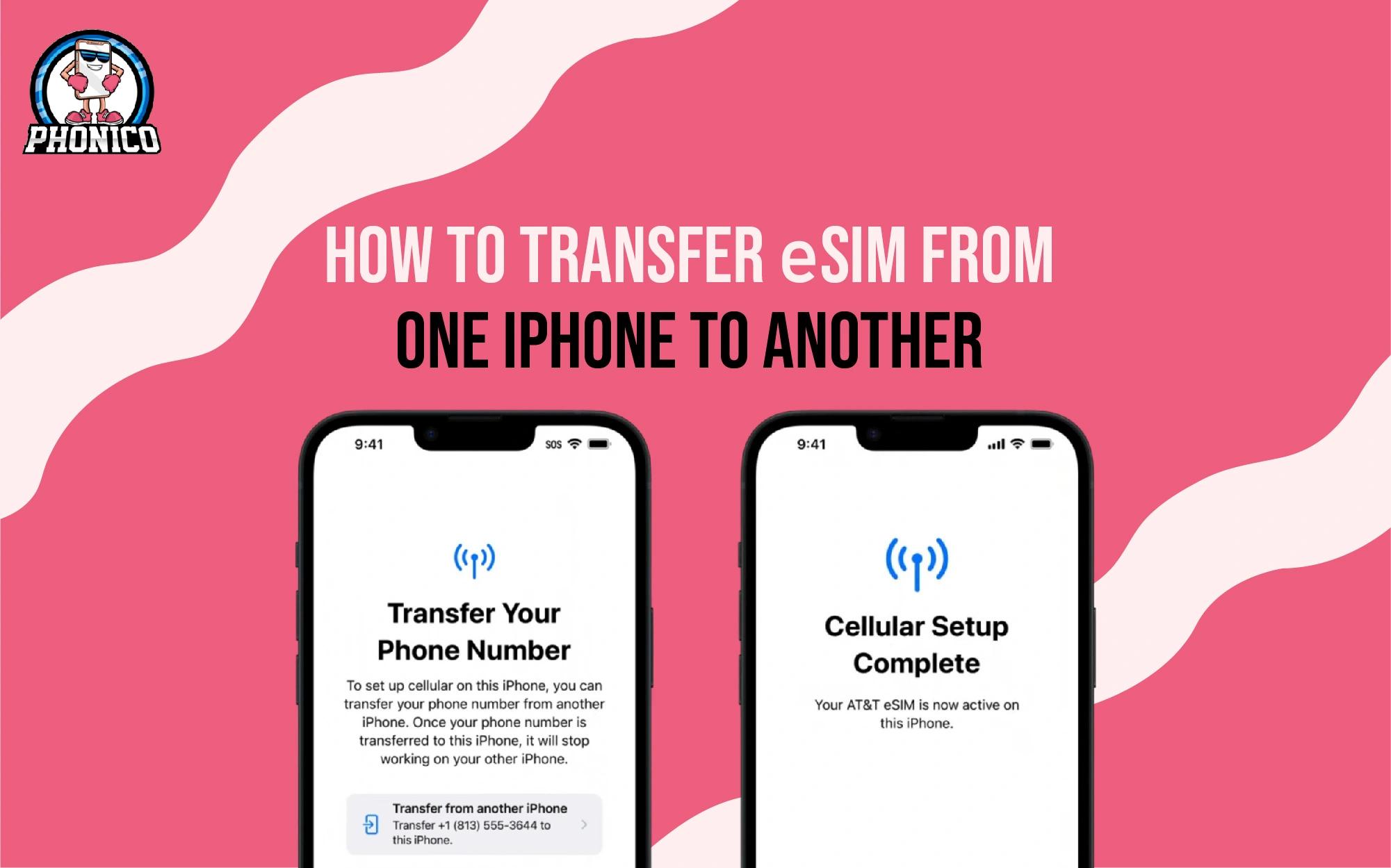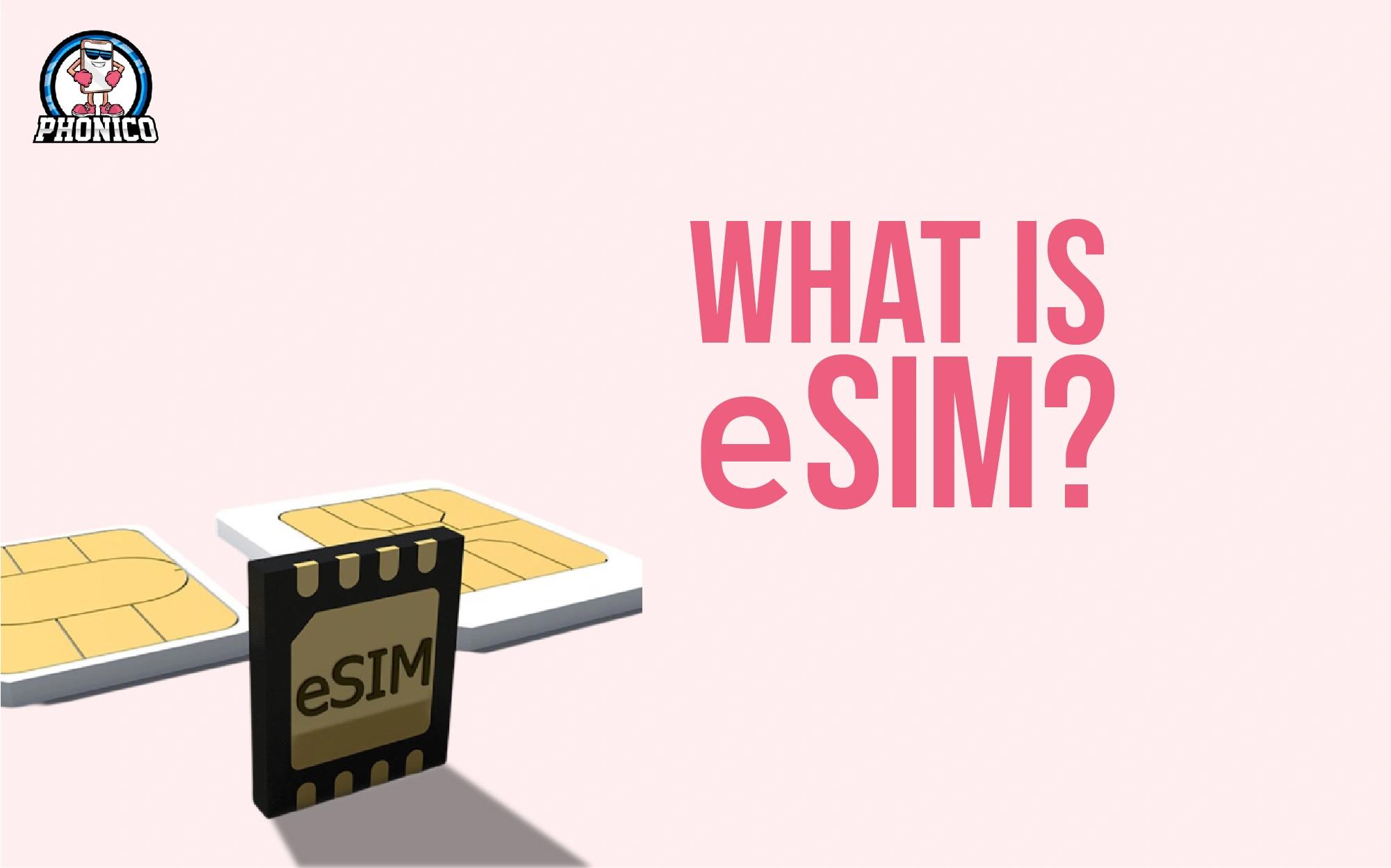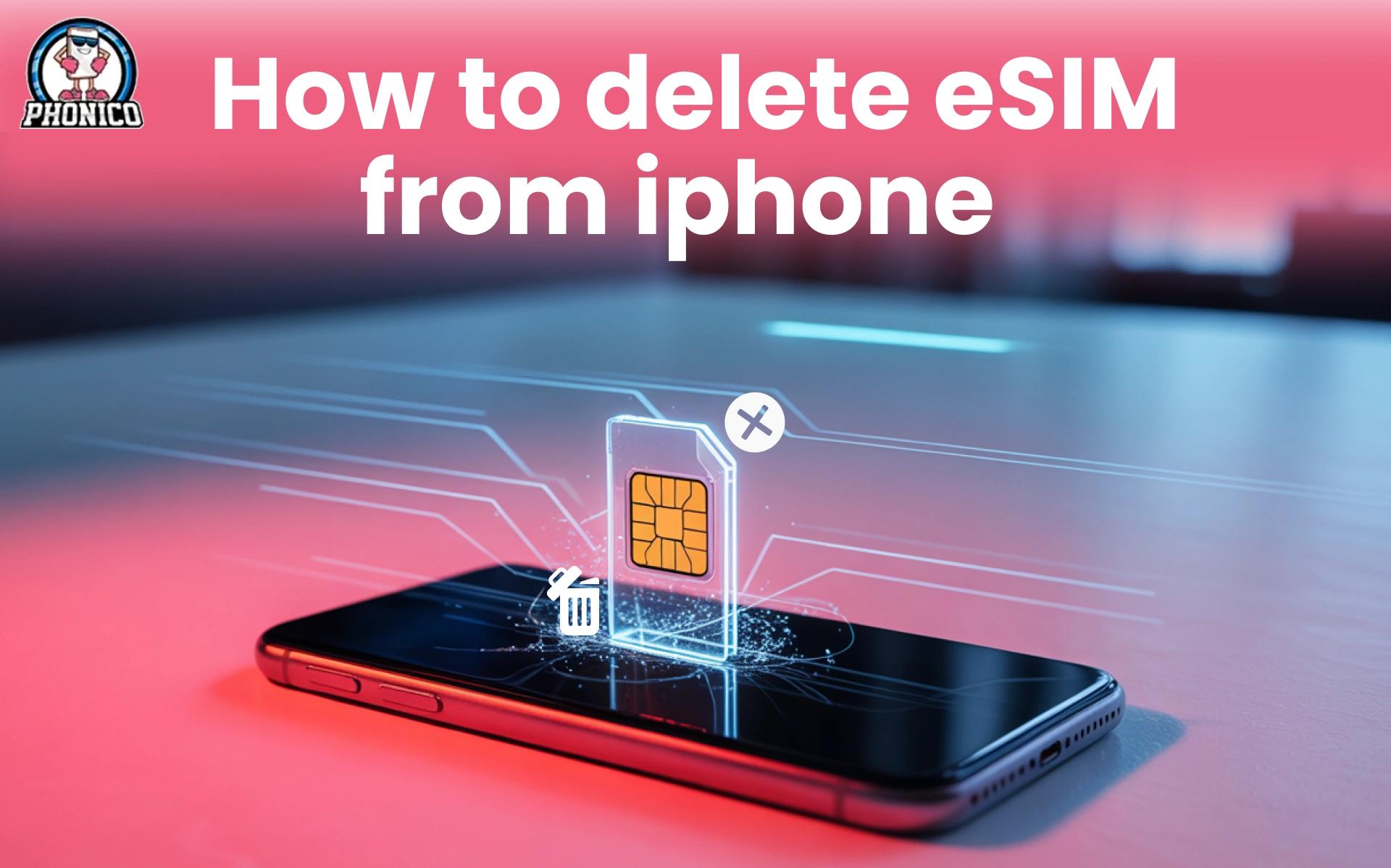What is a SIM Card? Shifting From SIM to eSIM like Phonico!
Ever switched phones and wondered, “How does my number move with me?” That little chip, the SIM card, is doing all the heavy lifting. It’s not just a plastic sliver; it’s the tech that connects your phone to the outside world.
For years, travelers swapped physical SIM cards at airports, fumbling with trays and pins. Now, the game has changed.
With eSIM technology, you skip the hassle, scan a QR code, and connect instantly. And that’s exactly what Phonico eSIM is built for: seamless mobile freedom, anywhere.
Whether you’re travelling internationally, managing two numbers, or ditching your old carrier, it all starts with understanding what a SIM really is.
What Is a SIM Card? Explained Simply!
A SIM card (short for Subscriber Identity Module) is a tiny chip that holds your mobile identity. It stores your phone number, contacts your mobile network operator, and gives you access to calls, text messages, and mobile data.
Think of it as a digital ID. It tells the cellular network who you are and what plan you’re using. Without it, your phone can’t connect.
There are two main types:
- Physical SIM - The plastic chip you insert into your phone.
- eSIM - An embedded SIM that’s built into your device and activated digitally.
Both do the same job, but eSIM is faster, safer, and built for the future, especially if you're traveling.
Phonico eSIM takes it a step further by letting you install your plan in minutes, no shipping, no shops, no plastic.
Types of SIM Cards: From Plastic to Built-In Power!
SIM cards didn’t always look the same. Over time, they’ve shrunk, upgraded, and even disappeared from view. But no matter the shape, every SIM still does one job: connect your phone to your network plan.
The following are the types of SIM cards you’ll see today:
Full-Size SIM (a.k.a. Credit Card Size)
Used in early mobile phones. Huge, bulky, and completely outdated today. Rare to find, but it laid the groundwork.
Standard SIM
Still used in some older mobile devices. It's larger than what you'd find in newer models, but it works just the same.
Micro SIM
A smaller version that fits mid-generation smartphones. Slimmer, but fading fast from the market.
Nano SIM
The most common physical SIM card today. Found in almost every smartphone, including older iPhone models and Androids.
eSIM (Embedded SIM)
This is the future. It’s a digital SIM, already built into phones like the iPhone 14 and newer. No plastic, no slot. Just scan and go. Great for travelers, dual plans, and switching networks easily.
Bonus: Many newer phones support dual SIM, meaning you can use both a physical and an eSIM at once. Perfect for work/personal numbers or keeping your home line active while abroad.
With Phonico eSIM, you skip the plastic. You install the eSIM digitally and start using your data plan right away, no stores, no waiting.
How Does a SIM Card Work?
What happens behind the scenes when you pop a SIM into your phone?
A SIM card (short for Subscriber Identity Module) is like a digital passport for your phone. It tells your mobile network operator who you are and what network plan you’re allowed to use.
That means when you send text messages, make a call, or browse the web, your SIM is working hard in the background.
Here’s what it does:
- Stores information like your phone number, contact list, and your plan settings.
- Contains an Integrated Circuit Card Identifier (ICCID) - this is your SIM’s unique ID.
- Connects your mobile phone to your carrier’s cellular network, so you can call, text, or use data.
Whether it’s a physical card or an embedded SIM (eSIM), the process is the same: identify, connect, and allow you to communicate.
With Phonico eSIM, all of this happens digitally - no card swapping or searching for SIM trays. It’s just faster, easier, and cleaner.
Why SIM Cards Still Matter in 2025?
Is eSIM the new game, “Do we still need SIM cards at all?”
The answer: Absolutely! Yes.
Even with advanced tech, SIM cards are the gatekeepers of mobile access. Whether you’re using a full-size SIM card from the past or a sleek eSIM today, your SIM:
- Gives you a phone number.
- Let your phone join the right cellular network.
- Keeps your mobile devices connected wherever you are.
And as eSIM technology grows, SIM cards are becoming smarter, not disappearing.
Phones like the iPhone 14 already come without a physical SIM tray in some regions. That’s where Phonico eSIM comes in. You can install it remotely, switch between plans, and roam globally, all without stepping into a store.
eSIM vs. Physical SIM: What’s the Real Difference?
Physical SIM cards are tiny plastic chips that slot into your phone. They’ve been around for decades, holding your network plan, phone number, and text messages.
But now, eSIMs are changing the game.
eSIM stands for “embedded SIM.” It’s built into your phone’s hardware—there’s no need to insert a card. You just scan a QR code or install it directly.
With a physical card, you're tied to one mobile network at a time. Switching means getting a new SIM, often from a store.
With an eSIM, it’s instant. You can change plans right from your screen, even while abroad.
Another key difference? Dual SIM capability. Most eSIM-compatible phones let you run two numbers at once. One eSIM, one physical SIM, or even two eSIMs on newer models.
Phonico eSIM gives you that freedom without the fuss of carrying or swapping a physical card.
What Phones Are Compatible with eSIM?
Most modern smartphones now support eSIM. If you’ve bought a phone in the last few years, chances are you’re good to go.
Apple users can start from iPhone XR and above. That includes the iPhone 14, which in the US ships with eSIM only, no physical SIM tray at all.
Google Pixel devices support eSIM from Pixel 3 onwards. Samsung users can look to models like the Galaxy S20, S21, S22, and newer Z Fold and Z Flip phones.
There are also selected models from Motorola, Huawei, and other Android brands that support embedded SIMs.
To check if your device supports eSIM, go into settings and search for “SIM” or “Mobile Network.” You’ll usually find an option to add an eSIM or see available profiles.
You can also check your device compatibility at Phonico eSIM. No need to visit a shop or wait for delivery. You just install the eSIM and connect in minutes.
Why Phonico eSIM is the Smart Choice for You?
Traditional SIM cards come with limits. You need to insert them physically. They’re easy to lose. And switching networks while traveling? A total headache.
Phonico makes it easier.
You can install the eSIM in just a few taps. Get reliable coverage, fast internet, and a smooth experience wherever you go.
Using dual SIM? Phonico eSIM can work alongside your existing number, keeping you connected both locally and abroad.
We support top mobile networks, offer affordable plans, and work seamlessly on most eSIM-ready devices. Whether you're traveling or just want a more modern connection, Phonico eSIM gives you more control over your mobile plan.
Conclusion
SIM cards, whether physical or embedded, are still a core part of how your phone works. They store your identification number, link you to your mobile network operator, and make sure your calls, messages, and data run smoothly.
The difference today is how much easier things have become. With eSIMs, there’s no more guessing which size SIM your phone needs. No more fiddling with trays. And no more chasing down SIM cards in foreign countries.
As the tech shifts from physical cards to embedded systems, you get more control with fewer limitations.
And that’s exactly where Phonico eSIM stands out, making it easier, faster, and smarter to connect from anywhere.
FAQs
What is the difference between eSIM and physical SIM?
A physical SIM is a removable card. An eSIM is built into your phone and works digitally. You don’t need to insert or swap anything with an eSIM—it’s faster and more flexible.
Can I have both eSIM and physical SIM on one phone?
Yes, most modern phones support dual SIM, one physical and one eSIM. Some phones (like iPhone 14) even support two eSIMs at once.
Do all phones support eSIM?
No. Only newer phones like iPhone XR and later, Pixel 3+, and Samsung Galaxy S20+ models support eSIM. Always check your phone’s settings to confirm.







